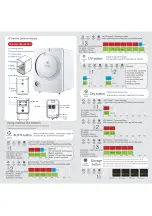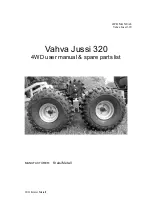
3
Accent and Levels:
Dynamic Accent and Level control of any drum sound in the mix is a big part of
making a beat sound right. Dynamic Accent provides emphasis on a particular note
through loudness. In analog circuits like the CP909, the accent pulse physically
"hits" the internal envelope circuit harder and provides not only a louder sound but
also slightly more attack (much like if you were to hit a real drum harder or softer
with a drum stick.)
While the original 909 has one global accent knob for setting accents levels for all
of its sounds, the CP909 (and all other drum modules in this series) offers an
independent accent level control. This feature adds to a clear work flow
than what was possible with the original machine.
Accent Explained:
The accent input can be driven by either a gate/trigger or CV signal.
While the accent input is not in use, the incoming gate input is routed
(normalized) to both the accent input and the gate input. This serves for two
purposes:
1. To allow you to reach the hottest drum sound possible even when there is no
accent input signal connected.
2. It makes the ACCENT knob act as a fine control of the output gain level. This
is very useful in situations where the level knob range is too coarse for setting
precise levels in a mix with other drum sounds.
Connecting a gate or CV signal into the accent input will break the internal routing
mentioned above and will allow for independent control over accent regardless
of the incoming gate signal. In this case as long as there is no accent signal
present, the drum sound will be set to the minimum accent level set internally,
and once the accent input gets hit by a gate or CV signal, the drum sound will get
louder in proportion to the accent level set by the accent knob. In short: the
higher the knob setting, the larger the difference will be in gain levels between
the accented notes and the un-accented notes. Using CV allows for even greater
variations.
Dynamics and Gain.























